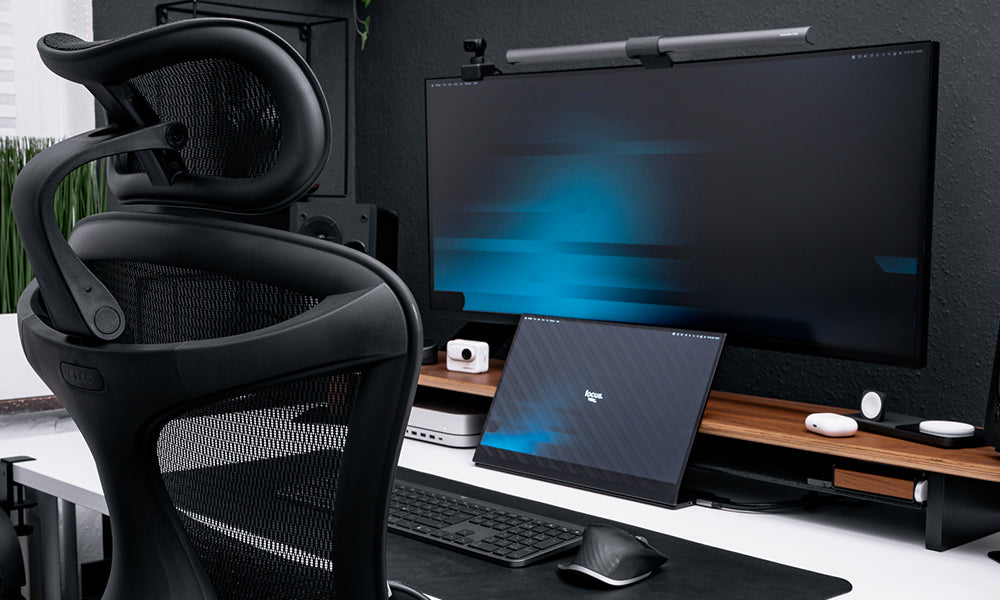Whether it's in an office or at home, the way we sit while working can have a profound impact on our health and well-being. Poor sitting posture can lead to a variety of health issues, including back and neck pain, reduced productivity, and even long-term health problems. In this article, we will delve into the importance of maintaining correct sitting posture while working at a desk, along with practical tips and ergonomic solutions to help you stay comfortable and healthy.
The Health Implications of Poor Sitting Posture
Back Pain
One of the most common complaints among desk workers is back pain. Prolonged periods of sitting in a slouched or hunched position can strain the muscles and ligaments in your back, leading to discomfort and pain. Over time, this can result in chronic back problems, affecting your overall quality of life.
Neck and Shoulder Pain
Neck and shoulder pain often accompany poor sitting posture. When you slouch or crane your neck forward to see your computer screen, it places extra strain on these areas. This can lead to tension, stiffness, and even headaches.
Repetitive Stress Injuries
Repetitive stress injuries, such as carpal tunnel syndrome, are also associated with poor ergonomics. When your wrists and arms are not properly supported, excessive strain can be placed on the tendons and muscles, resulting in painful conditions that may require medical intervention.
Reduced Productivity
Apart from the physical discomfort, poor sitting posture can significantly impact your productivity. When you are in pain or uncomfortable, it's challenging to concentrate and stay focused on your work. This can lead to decreased efficiency and reduced work quality.
Long-Term Health Risks
Sitting for extended periods with improper posture is linked to several long-term health risks. These include obesity, cardiovascular issues, and an increased risk of chronic conditions such as diabetes. Therefore, addressing your sitting posture is not just about immediate comfort; it's about safeguarding your long-term health.
The Fundamentals of Correct Sitting Posture
Now that we understand the consequences of poor sitting posture, let's explore the fundamentals of maintaining the right position when working at a desk.
Chair Selection
Your choice of chair is a crucial factor in maintaining good sitting posture. Look for an ergonomic chair with adjustable features like height, backrest, and armrests. Your feet should comfortably touch the ground, and your thighs should be parallel to the ground when you sit. The chair should provide adequate lumbar support to maintain the natural curve of your lower back.
Monitor Placement
Position your computer monitor at eye level. Your eyes should be in line with the top of the screen, and you should not have to tilt your head up or down to see it. This will help prevent neck and shoulder strain.
Keyboard and Mouse Placement
Your keyboard and mouse should be placed so that your arms are bent at a 90-degree angle. Your wrists should be in a neutral, straight position to avoid strain. If your desk is too high or too low, consider using an adjustable keyboard tray to achieve the right height.
Posture Awareness
Maintain a neutral spine position, with your back straight and shoulders relaxed. Keep your elbows close to your body and your feet flat on the floor. Avoid crossing your legs, as this can disrupt your posture.
Breaks and Movement
Sitting for prolonged periods, even with correct posture, can still be detrimental to your health. Make it a habit to take short breaks every 30 minutes. Stand up, stretch, and walk around to prevent stiffness and promote blood circulation.
Ergonomic Solutions for Correct Sitting Posture
Ergonomic Chair Accessories
If you don't have access to an ergonomic chair, you can enhance your existing chair's comfort with accessories like lumbar support cushions, seat cushions, and armrest pads. These additions can help improve your posture and reduce discomfort.
Standing Desk or Sit-Stand Desk Converter
Consider using a standing desk or a sit-stand desk converter. These options allow you to alternate between sitting and standing throughout the day, reducing the strain on your back and legs. Make sure your monitor and keyboard are at the right height for both sitting and standing positions.
Ergonomic Keyboards and Mice
Invest in an ergonomic keyboard and mouse. These are designed to reduce strain on your wrists and arms by promoting a more natural hand position.
Monitor Arms and Stands
Adjustable monitor arms and stands can be incredibly beneficial for setting your screen at the correct eye level. They allow for flexibility in positioning your monitor, helping you maintain a comfortable posture.
Footrests
If your feet don't reach the ground when seated, consider using a footrest. This will help you maintain proper leg and hip alignment.
Anti-Fatigue Mats
If you use a standing desk, an anti-fatigue mat can help reduce discomfort and strain on your legs and lower back.
Developing Good Sitting Habits
Correct sitting posture requires consistency and practice. Here are some tips to help you develop good sitting habits:
Set Reminders: Use alarms or software applications that remind you to take breaks and check your posture regularly.
Use a Timer: Follow the 20-20-20 rule. Every 20 minutes, take a 20-second break to look at something 20 feet away. This reduces eye strain and encourages movement.
Stretch Regularly: Incorporate simple stretching exercises into your daily routine. Focus on your neck, shoulders, back, and wrists to prevent muscle tension.
Stay Hydrated: Drinking water throughout the day encourages regular breaks to stand up, walk to the water cooler, and maintain circulation.
Ergonomic Training: Consider attending ergonomic training sessions or workshops to learn about the best practices for maintaining good posture.
Conclusion
Correct sitting posture is not just a matter of comfort; it is essential for your overall health and productivity. By investing in ergonomic furniture and accessories, along with maintaining self-awareness and healthy habits, you can significantly reduce the risks associated with poor posture. Make it a priority to create an ergonomic workspace that supports your well-being, and remember to take regular breaks and stay active to counteract the negative effects of prolonged sitting. Your body will thank you for it, and you'll enjoy a more comfortable and productive work experience in the long run.






Commenta
Questo sito è protetto da hCaptcha e applica le Norme sulla privacy e i Termini di servizio di hCaptcha.